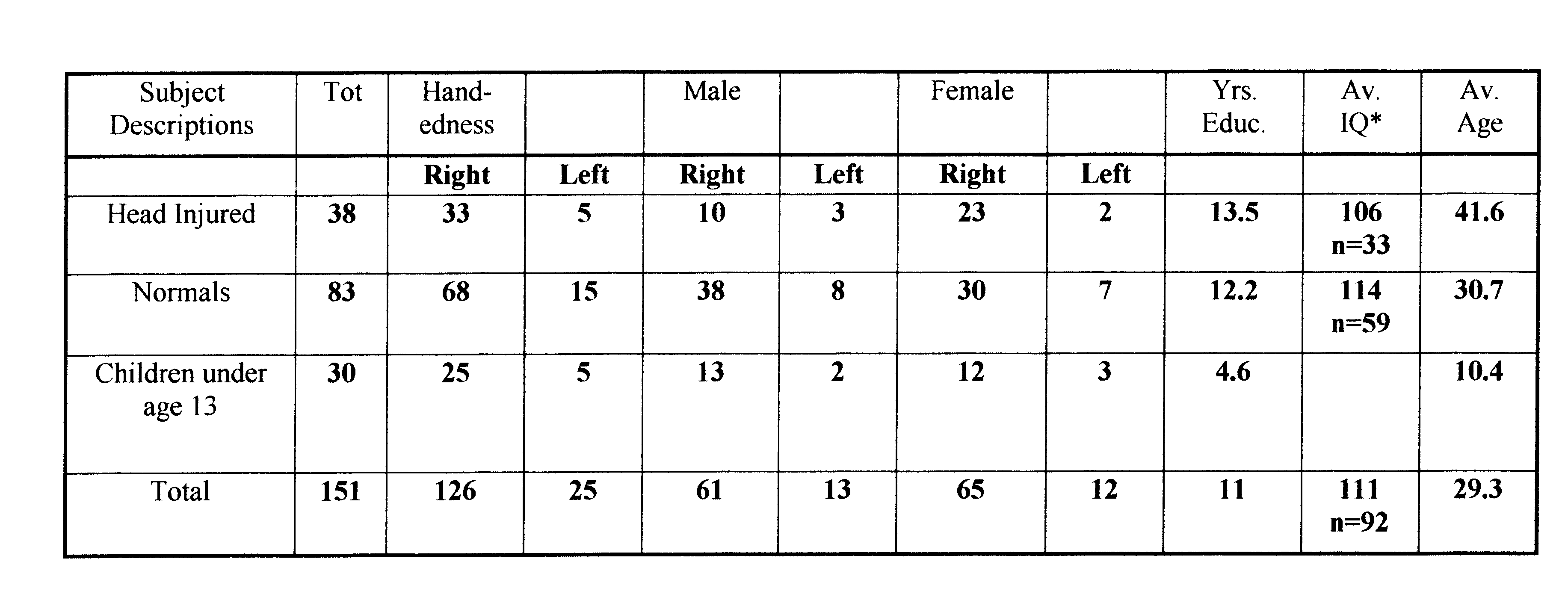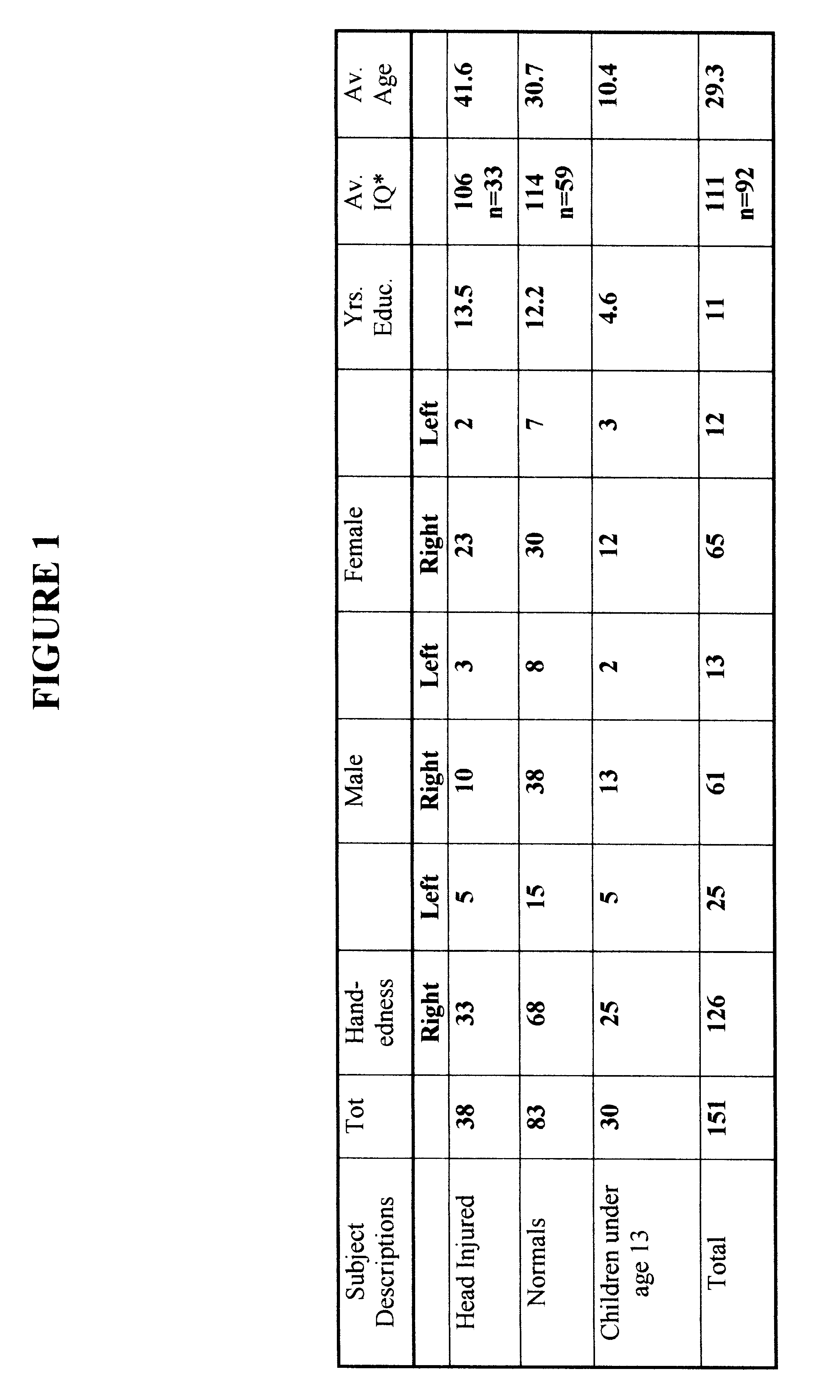Method for improving memory by identifying and using QEEG parameters correlated to specific cognitive functioning
- Summary
- Abstract
- Description
- Claims
- Application Information
AI Technical Summary
Problems solved by technology
Method used
Image
Examples
Embodiment Construction
A total of 151 subjects underwent the experimental procedure. As shown in FIG. 1 the following breakdown represents the demographics of the subjects involved. Two of the normal group had a head injury over 20 years previous to the evaluation. As their electrophysiological functioning and cognitive functioning was not demonstrating deficits or showing a particular electrophysiological pattern, which this study discovered, they were included in the normal group. Subjects were paid for their participation and signed an informed consent form as required in human research situations. As shown in FIG., the IQ* figures were obtained from Shipley Institute of Living Scores and employed the Paulson, M. J. & Lin, L. (1970) formula. The formula was averaged across all age groups. As formulas were developed on subjects age 15 and above, the Av. IQ cell also indicates the number of subjects that were above age 15 and the formula could be applied.
Twenty six of the subjects were on medication at t...
PUM
 Login to View More
Login to View More Abstract
Description
Claims
Application Information
 Login to View More
Login to View More - R&D
- Intellectual Property
- Life Sciences
- Materials
- Tech Scout
- Unparalleled Data Quality
- Higher Quality Content
- 60% Fewer Hallucinations
Browse by: Latest US Patents, China's latest patents, Technical Efficacy Thesaurus, Application Domain, Technology Topic, Popular Technical Reports.
© 2025 PatSnap. All rights reserved.Legal|Privacy policy|Modern Slavery Act Transparency Statement|Sitemap|About US| Contact US: help@patsnap.com



